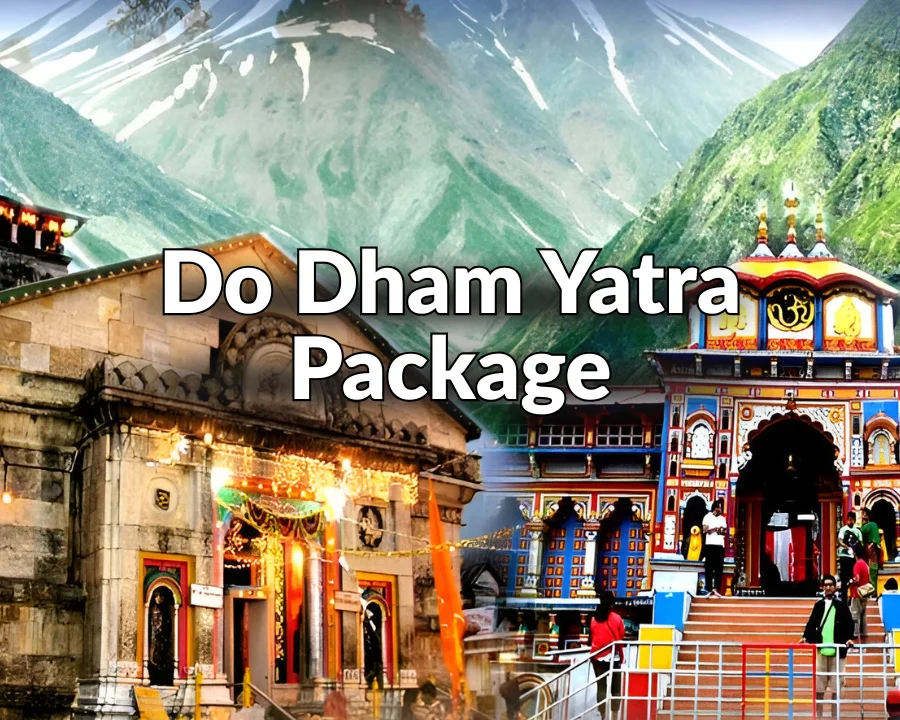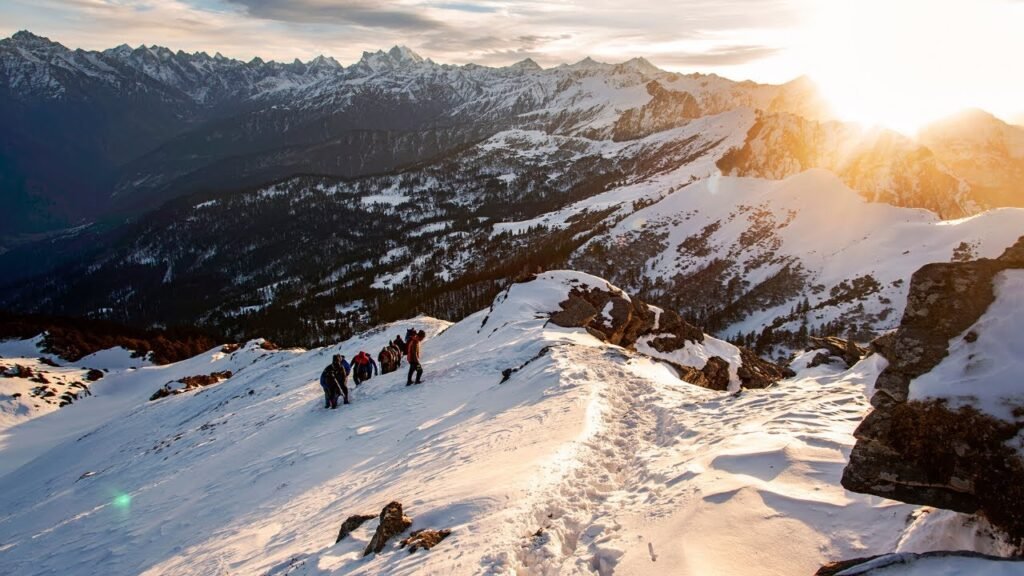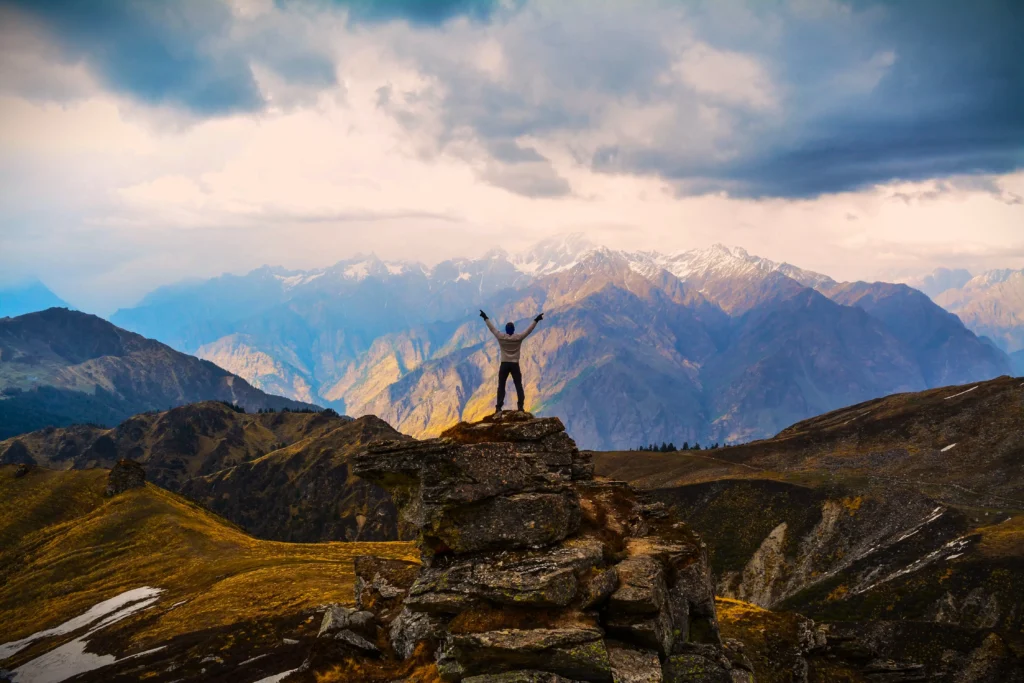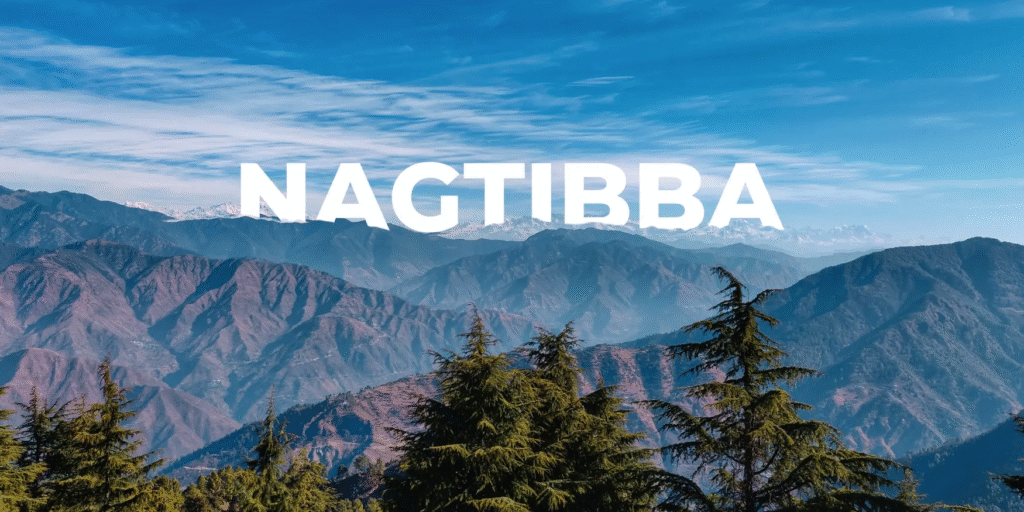
The Call of the Serpent’s Peak: Seriously, Just Go!
Let’s be honest: The Himalayas are a dream, right? But between office life, weekend plans, and that terrifying “week-long leave” application every thing feels immposible.
Here’s the secret: It doesn’t have to be.
Welcome to the magic of the Nag Tibba Trek! Known lovingly as the Serpent’s Peak, this majestic bump of earth stands at 9,915 ft (3,022 meters), and it’s the highest jewel in the lower Himalayan region of Garhwal. And I mean this: it is the best short trek near Delhi, Dehradun, and Mussoorie—hands down.
Forget complicated permits or weeks of acclimatisation. This journey is the Himalayan experience perfectly packaged for your weekend bag. If you’re a beginner, if you’re looking for a safe, fun family trek, or if you just need to scratch that adventure itch fast, this easy Himalayan trek is your ticket to mountain bliss.
About Nag Tibba: Your Weekend Escape to the Garhwal
The Nag Tibba trek is tucked away in the beautiful, soul-stirring Garhwal region of Uttarakhand.
Location, Significance, and a Local Secret
Where We’re Going, Lower Garhwal Himalayas, just a stone’s throw (but a long drive!) from Mussoorie.
The Height: We’re aiming for ≈9,915 feet (≈3,022 meters)! That’s a proper summit feeling.
The Name’s Meaning: “Nag Tibba” means Serpent’s Peak. Local villagers truly believe the Nag Devta (Serpent God) lives here, keeping their homes and cattle safe. When you hike, you’re walking on hallowed ground.
Getting Started: Pantwari is the Beginning of the Magic
One of the reasons I push the Nag Tibba weekend trek so much is because getting there is actually manageable. It feels remote, but it’s incredibly accessible.
Starting Point Distance from Major Cities Drive Time (Approx) My Takeaway
Pantwari Village ≈350 km from Delhi ≈8−9 hours Perfect for an overnight bus or late-night drive!
≈100 km from Dehradun ≈3 hours A quick, scenic hop.
≈60 km from Mussoorie ≈2 hours Great way to escape the crowds of the Queen of Hills.
Export to Sheets
The journey kicks off officially from the little cluster of homes and fields known as Pantwari village. Trust me, after the drive from Delhi, the fresh, cool air of Pantwari will feel like a long, cool drink of water! It’s the ideal start for a quick and rewarding trek near Delhi.
Highlights of the Nag Tibba Trek: This is Why We Hike
You’re getting so much bang for your buck on this short trip! The beauty of the Nag Tibba weekend trek is that it doesn’t waste a single moment. It’s just non-stop gorgeousness.
Summit Views of the Peaks: The Big Reveal
This is the moment that makes all the effort melt away! When you reach the top of Nag Tibba, you realize you’re not just looking at a view; you’re standing in a God’s own viewing gallery. For an easy Himalayan trek, the payoff is disproportionate to the effort, and I mean that in the best way possible.
Keep your camera ready (and your jaw unhinged!) for:
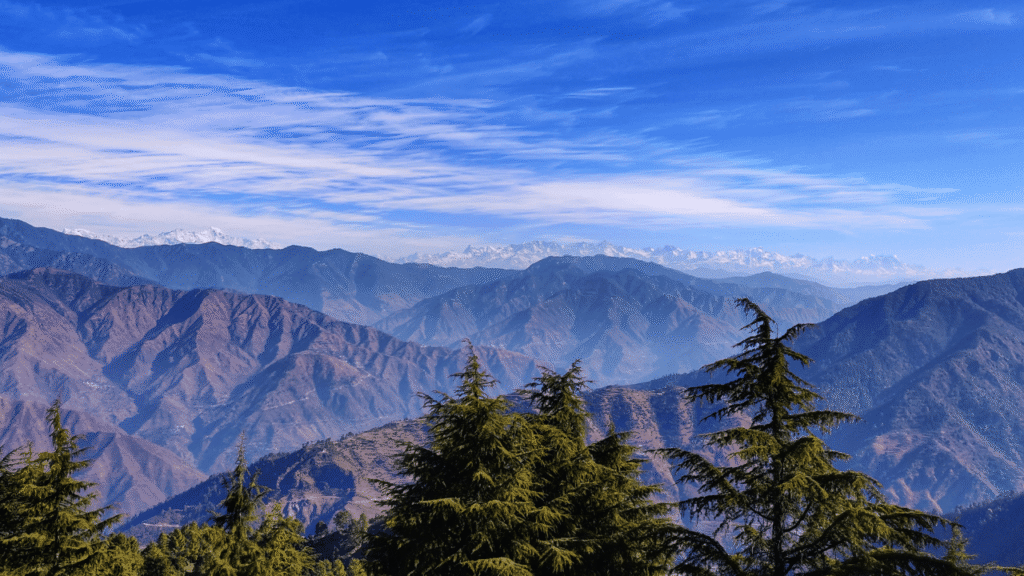
Swargarohini: The legendary ‘Stairway to Heaven’ peak. It looks incredible from here.
Bandarpoonch: Huge, dominant, and impossible to miss.
Kedarnath & Gangotri Peaks: Catching sight of these sacred giants just hits different.
And the best part? The sunrise. I remember sitting there, freezing my butt off, waiting, and then seeing the first ray of light touch the top of Swargarohini—it was like the mountain was set on fire. That experience alone is worth the trip.
Charming Forest Trails: Pine, Oak, and a Symphony of Red
The path itself is a delight, not just a means to an end. It’s a sensory experience:
The Smell of the Forest: You’ll be deep in dense oak, pine, and rhododendron forests. The air is thick with the clean, earthy scent of pine. It’s nature’s best aromatherapy!
The Meadows: On my last trip, the ground was covered in tiny, colourful seasonal wildflowers—it was like walking on a Persian rug. These are perfect spots for lunch and soaking up the sun.
Camping Under the Stars: The Quietest Night of Your Life
The designated Nag Tibba camping site (often at Base Camp) is where the true mountain peace sinks in.
The Night Sky is Everything: We’re talking zero light pollution. The sky becomes a deep, velvet canvas dusted with a million brilliant stars.
Photography Opportunities: Get ready for stunning long-exposure shots. Sunset is fiery; the Milky Way (if you’re lucky!) is right there.
Best Time to Visit Nag Tibba: Pick Your Poison (or Your Paradise)
This is a fantastic year-round destination! The Nag Tibba trek never closes; it just changes its outfit. Your choice depends on the kind of memory you want to make.
1. Summer (April to June): Clear Skies and Comfort
The Vibe: This is trekking in its most comfortable form. The air is warm,
the trails are dry, and the skies are generally clear.
Perfect For: Families and first-time trekkers who want an easy, stress-free time. You’ll see the meadows at their greenest.
2. Post-Monsoon (Late September to November): The Sharpest Views
The Vibe: After the monsoon rain cleanses the atmosphere, the visibility is insane. This is the time for truly panoramic Himalayan views.
Why I Love It: The air is crisp—not freezing, but cool enough that your woollen cap feels cozy. The forests are still dense and beautiful.
H3: 3. Winter (December to February): The Snow Trek
The Vibe: The Nag Tibba trek transforms into a proper winter wonderland. If you’ve ever dreamt of walking on a snow-covered trail, this is your chance without the high-altitude risk.
Be Prepared: It gets seriously cold at night (we’re talking below 0
∘
C!), and you must carry proper gear (more on that later!). But waking up to a world of pristine white? Worth the frozen toes. This is the ultimate snow trek experience for a beginner.
Nag Tibba Trek Difficulty & Who Can Do It: Yes, You Can!
Seriously, if you can walk for a few hours, you can do this.
Difficulty: Easy to Moderate – Perfect for a Quick Win
The trail is wonderfully obvious and easy to follow. You don’t need a Sherpa team; you just need your two feet and a good attitude.
Total Distance: ≈16−18 km (over 2 days). Very manageable.
The Challenge: The final ascent to the summit from the base camp is a steep little push. It’s short, sharp, and it gets the heart pumping. In snow, it can be a mini-battle, but the view is the trophy!
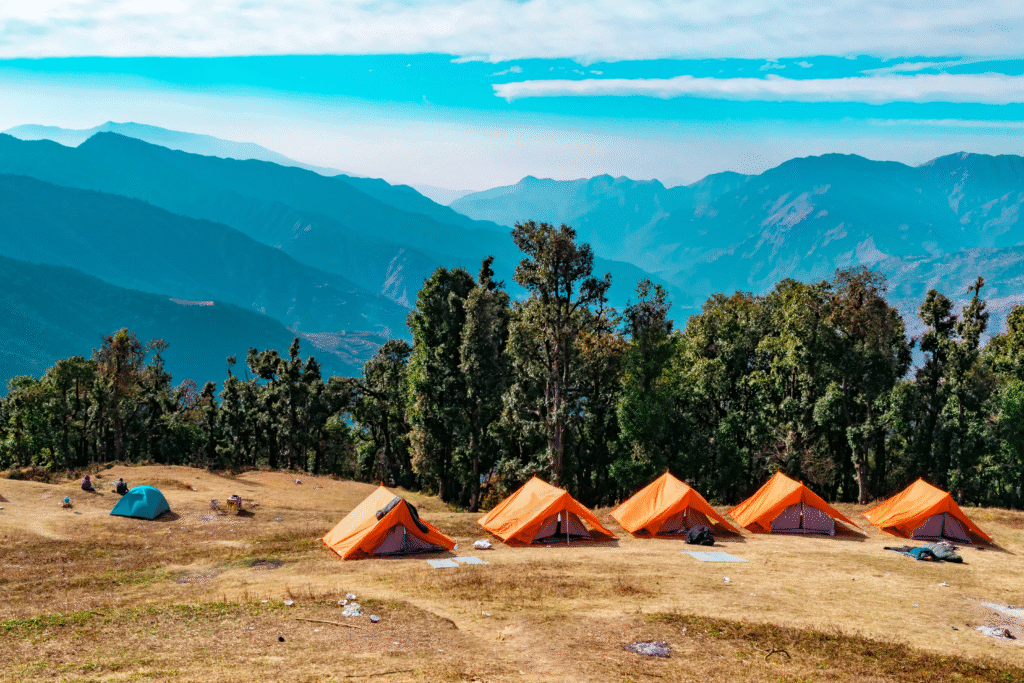
Your Ideal Starter Trek
The Nag Tibba weekend trek is the most inclusive adventure I know:
Beginners, This is Your First Summit! You get the full mountain experience—the camping, the altitude, the view—but without the risk of high-altitude sickness. It’s the ultimate confidence booster.
Families Are Welcome: This is genuinely suitable for families with reasonably active kids above 7 years. It’s short enough not to bore them and exciting enough to make them feel like mountain heroes.
The Weekend Warrior’s Dream: Need to reset your mind but only have Saturday and Sunday? This is your answer. You can complete the whole thing and be back for your Monday morning coffee, feeling like you accomplished something epic.
Flora and Fauna: Walking Through Nature’s Gallery
The hike itself is a lesson in mountain ecology. Keep your eyes open and your ears peeled!
Forest Trails: The Green Lungs of the Hill
As you move up from Pantwari, the forest changes its character:
Ancient Oaks: These are the wise, silent guardians of the trail.
Rhododendron and Deodar: Look out for the massive, sweet-smelling deodar (Himalayan cedar). In spring, the red-flowered rhododendron makes the air taste sweet!
Herbal Wonders: Many local plants here are used for traditional medicine. Your local guide might point out a few of these fascinating, hidden secrets.
Wildlife Encounters: Keep it Quiet!
You won’t see tigers (thankfully!), but the forests are full of life.
Birdsong Symphony: If you love birds, bring your binoculars. We’re talking Himalayan Monals, various colourful pheasants, and a whole host of smaller songbirds.
Mountain Goats: The area is home to Goral, a kind of small mountain goat/antelope. They’re shy, but if you’re quiet in the meadows, you might spot one.
Temple: There’s a tiny, quiet temple near the top. It feels like a humble place of power. The locals believe the deity protects them
Local Festivals: Ask your guide about the annual pilgrimage.
Why Choose Nag Tibba Trek? The Quick Pitch
Still need convincing? Here’s the bullet-point truth about why the Nag Tibba weekend trek is the absolute best choice for a quick escape:
Summit Satisfaction in 48 Hours: You get the full summit experience (almost 10,000 feet!) in a single weekend. That’s a huge win!
Beginner-Friendly, Expert-Approved: It’s an easy Himalayan trek that introduces you to the mountains without fear.
The Views vs. Effort Ratio is Sky-High: Honestly, you shouldn’t get to see Swargarohini with so little effort, but you do!
It’s Your Escape Hatch: It’s the most accessible trek near Delhi for a completely transformative mental break.

Packing List for Nag Tibba: Don’t Forget Your Sense of Humour
Because it’s a short trek, you don’t need to carry your entire house. But you do need to be smart, especially about the cold.
Clothing: Master the Art of Layering
The trick is the layering system. You’ll sweat going up, and freeze when you stop.
Base Layers (Crucial in Winter!): Thermals. Seriously, invest in a good pair. They are life-savers at night.
Mid-Layers: A good fleece or two. They keep the heat in.
Outer Shell: A waterproof and windproof jacket. Even in summer, mountain rain can sneak up on you.
Trek Pants: One or two pairs of comfortable, quick-drying hiking trousers.
Essential Gear: Your Best Friends on the Trail
Trekking Shoes: This is the one thing to never skimp on. Good, broken-in, ankle-supportive, and waterproof trekking shoes. Your feet will thank you.
Backpack: 40−60 litre bag. Pack light, only essentials!
Headlamp/Torch: For the early morning summit and camp nights.
Sun Protection: Sunglasses and a sun cap.
The Personal Touch: Don’t Forget These!
Water Bottle/Hydration Pack: Stay hydrated! The air is dry.
Snacks: Energy bars, dried fruits, and one comfort food you like
First Aid Kit: A small one with band-aids, pain killers, and any personal medication.
Safety Tips: Respect the Mountain
Even though it’s an easy Himalayan trek, we must treat the mountains with respect.
Find your pace, drink water constantly. Hydration is the simplest, best defense against feeling unwell.
Have faith in your Leader:They know the weather, the trail, and the mountains. Their expertise keeps you safe.
If you loved reading about this you might also like Kedarkantha Trek. Contact us to join us in our trekking journey


